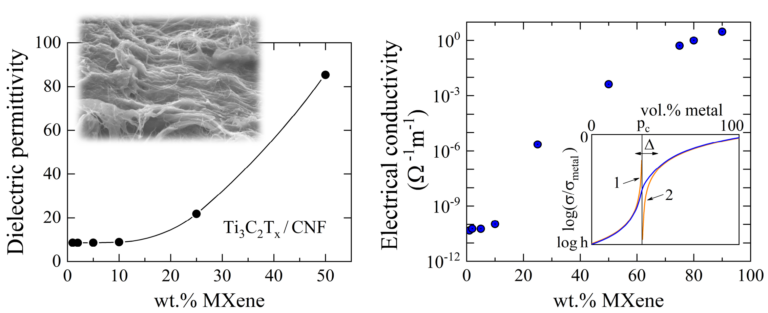Other news

Flexible and eco-friendly titanium carbide MXene/cellulose nanofibrils composite films with enhanced dielectric response
We developed flexible and eco-friendly composite films, prepared by vacuum filtration or solvent casting method from the native or carboxylated cellulose nanofibrils and high electrically and thermally conductive 2D titanium carbide (Ti3C2Tx) MXenes. The electrostatic repulsion and hydrogen bonding between the hydrophilic surface/terminal groups on cellulose and MXene was shown to render their self-assembly distribution and organization into morphologically differently structured films with, consequently, different functional properties. A strong enhancement (for an order of magnitude) of the dielectric permittivity on increasing MXene content demonstrates the potential of developed material for applications in flexible dielectric and piezoelectric devices.

Article in Nature Communications
Our coworker Anna Razumnaya, in collaboration with the Helmholtz-Zentrum Berlin für Materialien und Energie (Germany), the University of Picardie Jules Verne (France), and the CEMES-CNRS and Université de Toulouse (France), reported Switchable Topological Polar States in Epitaxial
BaTiO3 Nanoislands on Silicon in Nature Communications.
This study presents the creation of epitaxial BaTiO3 nanoislands on silicon, featuring chiral topological polar textures. These structures demonstrate unique center-type polarization domains that can be reversibly switched under an electric field. Insights into their 3D polarization patterns were achieved through piezoresponse force microscopy and phase-field modeling. The findings highlight a promising approach for integrating functional ferroelectric nanostructures into silicon-based platforms for next-generation nanoelectronic devices.
